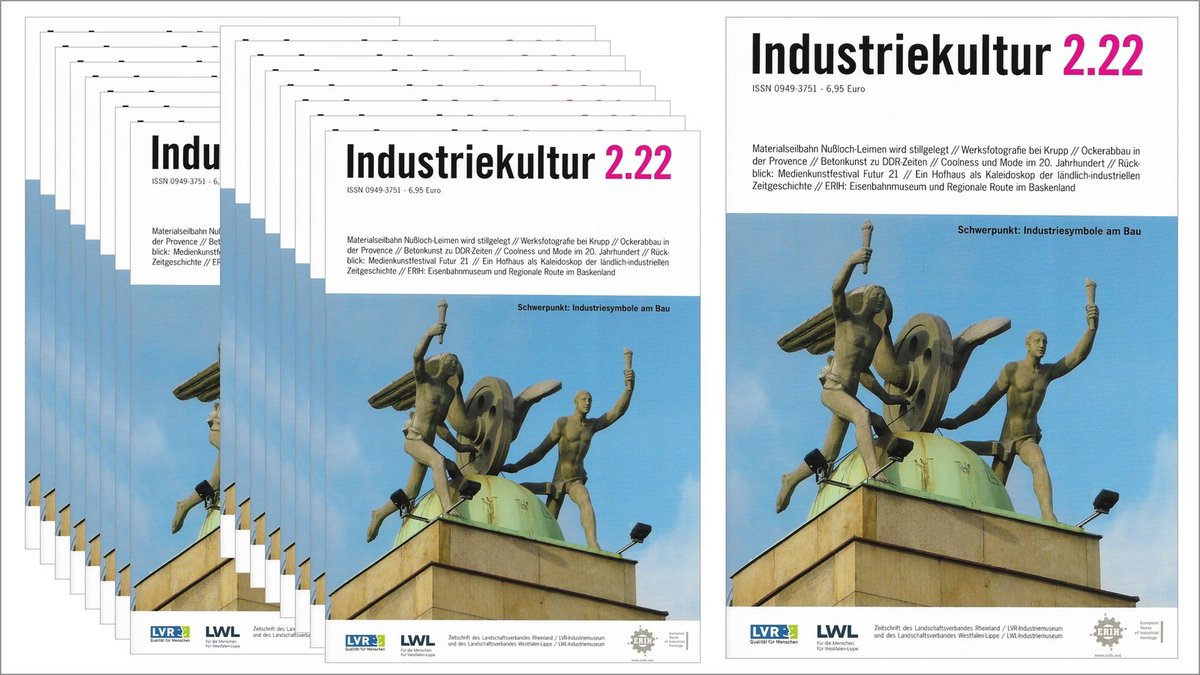
German magazine Industriekultur, No. 2.22: Railway Museum and ERIH Regional Route Basque Country, Part 2
The Basque Country, an autonomous region in the north of the Spanish peninsula, owes its prosperity to industrialisation, a process that starts as early as the 1840s and unfolds quite differently in the three Basque provinces of Álava, Bizkaia and Gipuzkoa. To find out more about this, visitors are invited to explore the 33 exciting sites along the ERIH Regional Route Basque Country. Of these, 15 alone are located in the province of Gipuzkoa, to which the current issue of the German magazine Industriekultur dedicates the second part of its ERIH focus on the Basque Country. At the centre is one of the three ERIH Anchor Points in the region: the Basque Railway Museum in Azpeitia.
Its facilities – the station built in 1925, the engine house, the maintenance workshop and, of course, the rich selection of rolling stock – are all still in their original condition and reveal the region's railway system as a microcosm of its own, since Basque railways operated on a one-metre gauge basis – 668 millimetres less than the rest of the Spanish rail network. Why? The rugged mountains of northern Spain, criss-crossed by narrow valleys, did not allow for anything other than narrow-gauge railways. This can be experienced on an almost five-kilometre-long museum train ride between Azpeitia and Lasao.
Until most connections were closed down, the railway remains the most important means of transport for people and goods in the region for decades. In terms of industry, the easternmost of the three Basque provinces, Gizpuzkoa, is characterised by a wide range of small and medium-sized, often family-run companies in the metalworking sector as well as in the textile, paper, armaments, consumer goods and cement industries. This is reflected, for example, in the Basque Iron Museum in Mirandoala Iron Valley, located in a former iron foundry in Lagazpi and illustrating the history of iron in respect of industrial, ecological and social aspects. At the same time, the museum is the starting point for several trails that take visitors to the monuments of industrial heritage.
The manufacture of firearms is another important part of the metalworking industry, as shown in the Arms Industry Museum in Eibar. However, a crisis in the armaments sector at the beginning of the 20th century triggers a process of transformation and reinvention, eventually leading to the manufacture of bicycles, sewing machines, household appliances and machine tools. This is particularly evident in the Machine Tool Museum in Elgoibar.
A long tradition, even if not as dominant as in the western neighbouring province of Bizkaia, characterises the iron and steel industry. Testimony to this is provided by the Irugurutzeta furnaces in Irun as well as the Mutiloa mining area in the municipality of Ormaiztegi, with its iron ores supplying English and French foundries, among others. Again, the transportation of choice is the railway, still leaving its architectural mark on the town with the Ormaiztegi Viaduct, inaugurated in 1864 and closed in 1995. To conclude the tour across the regional industrial heritage, visit the amusement park on the panoramic terraces of Monte Igueldo in Donostia. Special highlight: the 312.5-metre ascent with the Funicular Monte Igueldo, the oldest cable car in the Basque Country offering spectacular panoramic views.
ERIH Regional Route Basque Country
ERIH Anchor Point Basque Railway Museum
ERIH article in 'Industriekultur': "Von Dampfloks bis zu Bahnhofsuhren. Das Baskische Eisenbahnmuseum in Azpeitia"
ERIH article in 'Industriekultur': "Eisen machte einst die Wirtschaft stark. Regionale Route Baskenland, Teil 2"

